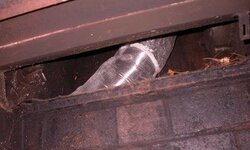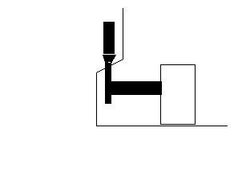Dropped the 6" insulated flex liner down the chimney today. Couldn't get through the throat at the damper. The steel throat measures 5" across. As shown in the picture.
What to do? I would prefer a solution that would allow some future owner to return the fireplace back to an open fireplace if they so desired. I don't want to go in there and hack the throat frame all up.
How about feed the 6" liner into an ovalized T section, then, connect the 6" stove exhaust right to that ovalized T, like in the diagram below.
What to do? I would prefer a solution that would allow some future owner to return the fireplace back to an open fireplace if they so desired. I don't want to go in there and hack the throat frame all up.
How about feed the 6" liner into an ovalized T section, then, connect the 6" stove exhaust right to that ovalized T, like in the diagram below.



